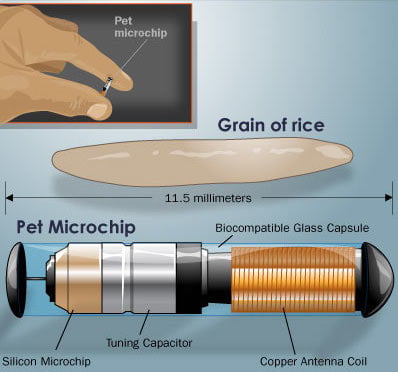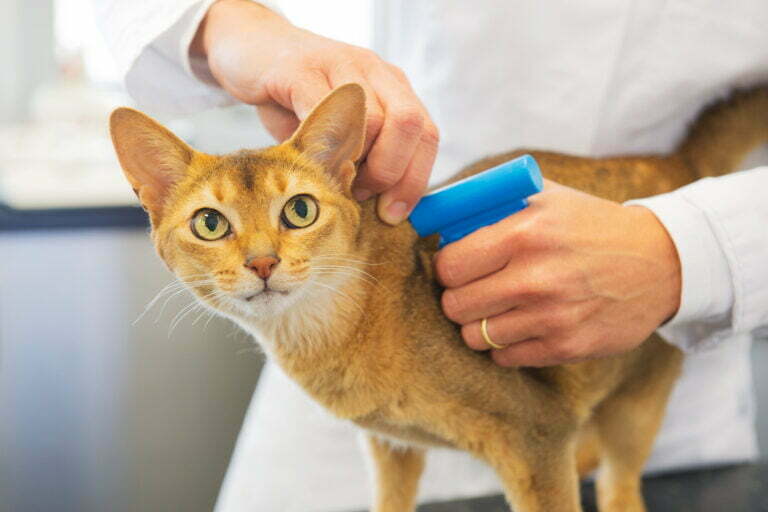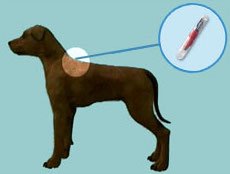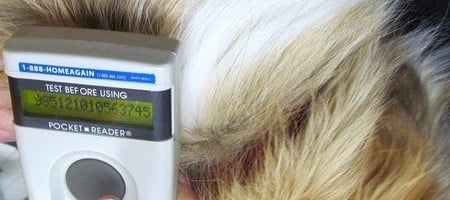One month after the historic flooding in the Baton Rouge, Louisiana area, hundreds of animals were still waiting to be reunited with their owners. These pets left in limbo had no identification tags or had identification information that was incorrect. None of these animals had microchips and/or microchips with updated information. All these issues greatly inhibit the process of reuniting lost pets and their owners.
Thirty-three percent of all pets will become lost during their lifetime. In the United States, approximately 10 million dogs and cats are lost or stolen every year. Statistics indicate that only about 22 percent of lost dogs that end up in a shelter are reunited with their families. Listed below are some steps to help provide a lost pet the best chance of returning home to its beloved owner.
Proper ID
Ensure your pet(s) is (are) wearing proper, current and accurate identification at all times. An ID tag including current contact information attached to a secure buckle collar is highly recommended. A microchip tag is also a good idea as well.
Microchip
The microchip has a unique number that can be read by a scanner. The vet inserts a chip (the size of a grain of rice) under the cat or dog’s skin between the shoulder blades. The procedure, which offers secure, reliable, individual and permanent identification, takes seconds to perform. Most importantly, a microchip cannot fall off or be removed from the pet like collars and tags.
Registration
Having the vet embed a microchip is only the first step, as the chip needs to be registered with a microchip company with the pet owner’s correct and current contact information including address, multiple contacts and multiple phone numbers. Providing multiple contacts and/or phone numbers is particularly important if you tend to travel frequently outside the country. It is also wise to provide the microchip company a detailed description of the pet. The registration step is crucial as most shelters only hold animals for five days prior to making them available for adoption. Registration is critical to increasing the probability of lost cats and dogs being happily rejoined with their pet parents. This is especially true when considering that only 58 percent of animals with microchips have been registered in a database with the owner’s contact information.
Please note that microchips are not GPS tracking devices, as is commonly misunderstood. Lost animals cannot be located via tracking/location technology even if they have a microchip. The microchip allows potential identification once the animal has been found, brought to a vet or shelter and been scanned.
Finally, the importance of notifying the microchip company of changes in address, phone numbers, etc., cannot be overstated. Please make sure your information is always up to date.
As a strong pet microchip proponent, I offer one caveat, Greyhounds. Most Greyhound owners are likely aware of this, but for those who are interested, know that it is not advised to embed a microchip into a Greyhound. It is not that you can’t, it is just not recommended. This is not due to the size of the microchip which is very small. The potential issue is the acute pain caused upon insertion as well as the chronic pain caused after insertion because of the low body fat inherent in Greyhounds. This probably sounds completely counterintuitive. It really is not. Any Greyhound owner practicing recommended Greyhound care guidelines should have a very low chance of losing their dog(s). This article was adapted from a September 14, 2016 story in The New Orleans Advocate titled “Animal Rescue: Microchips can help ensure happy endings when pets are lost.”





